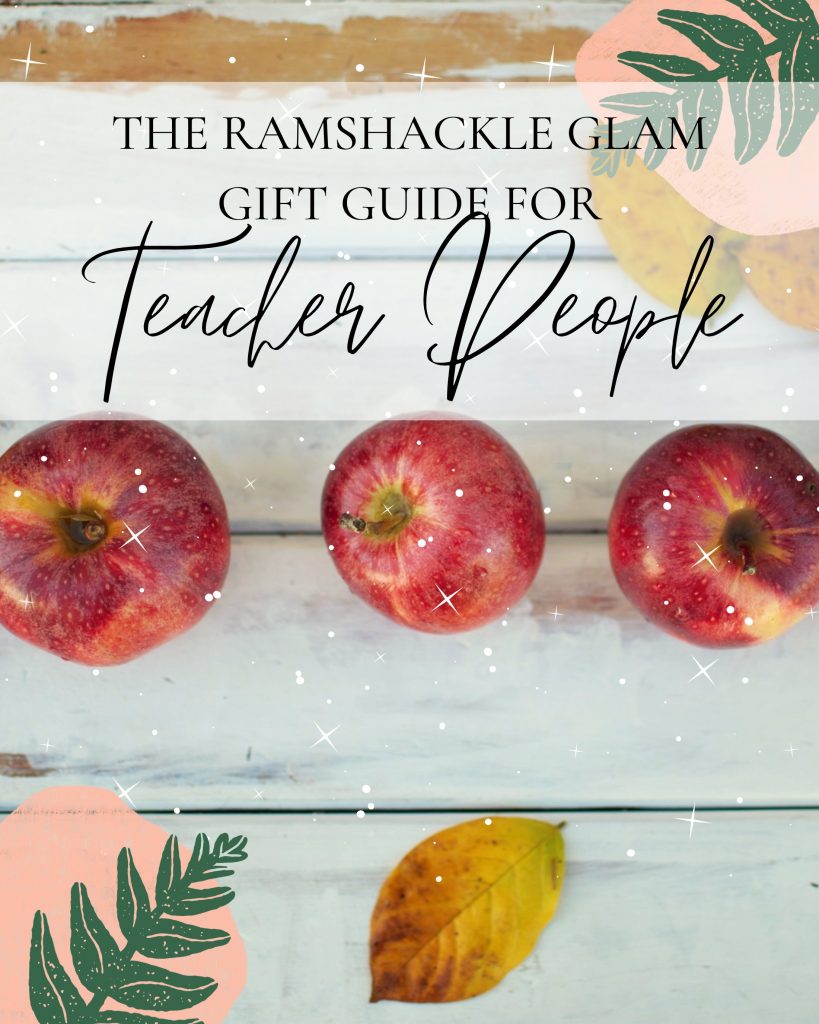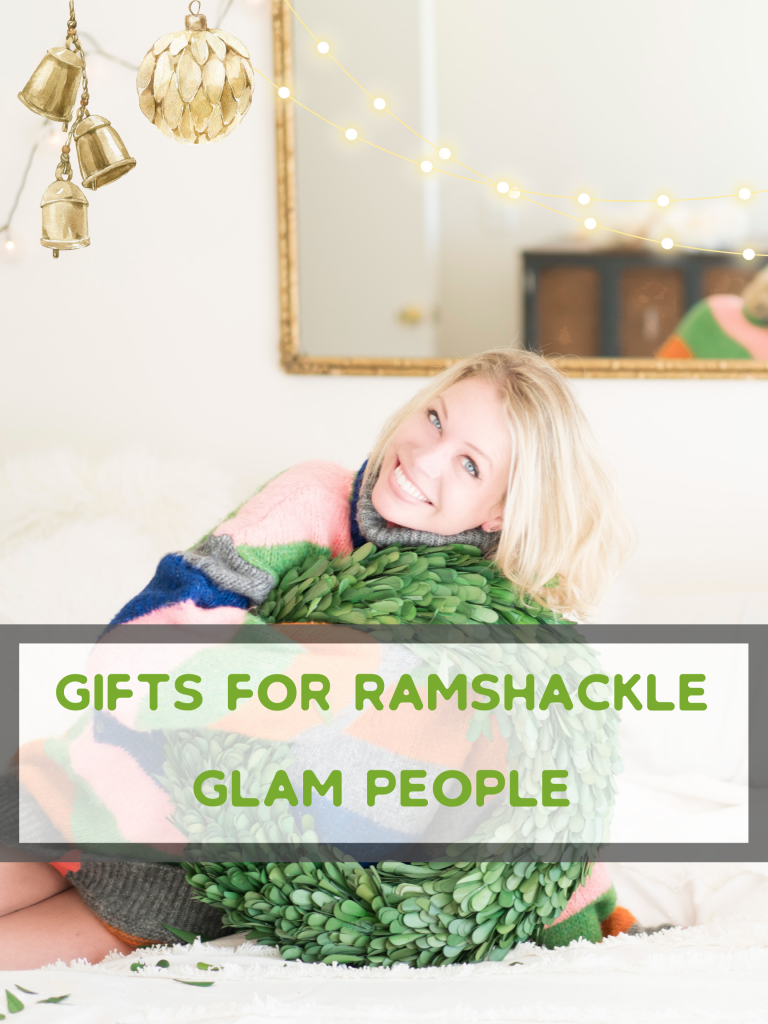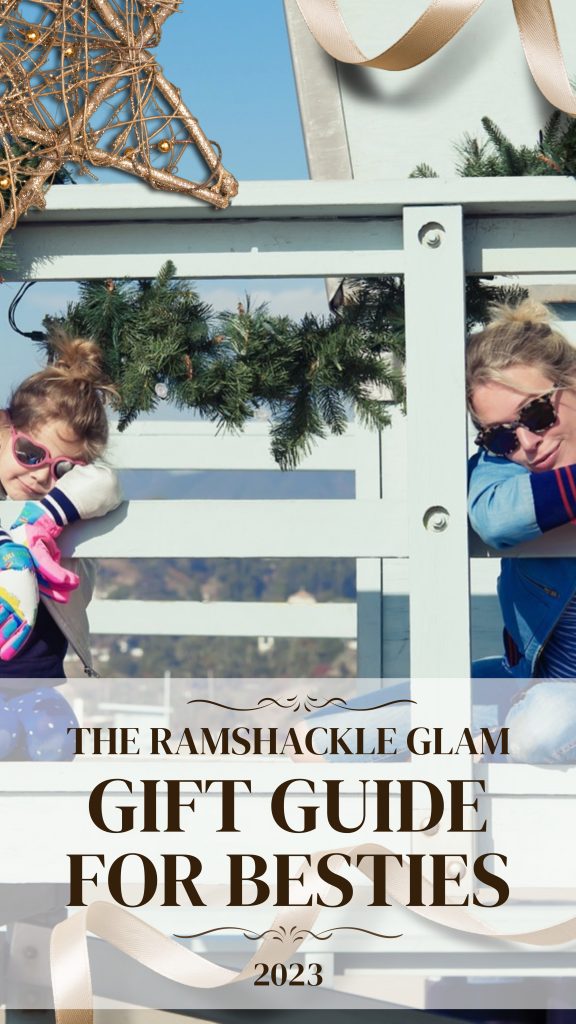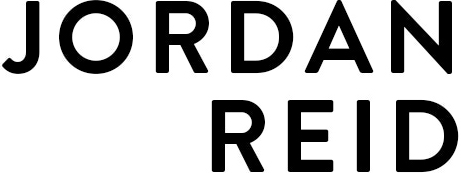
{ Outtake from a DKNY shoot | Midtown NYC | 2015 }
{ Suit (majorly on sale) | Crop Top (ditto: great sale) | Hair by Karmela Lozina for John Sahag }
A question that I get asked almost daily:
So…what, exactly, do you do for a living?
To this, I typically answer “I’m a writer” and follow up the next question (“What do you write?”) with “A website and books.” This isn’t an especially accurate description of how, exactly, I spend my days, but it’s very likely that the person who asked me what I do was just being polite. (Why don’t I say “I’m a blogger”? Because saying this tends to elicit the response “Oh, fun! My sister-in-law/aunt Mimi/next door neighbor writes a blog! But what you do for a living?”, and then I get into lengthy explanations of things like integrations and affiliate networks because I love talking about this stuff, and eyes start to glaze over and there you go: now I’m that chick at the party boring everyone.)
Except the people who actually do want to know about how this business works? They tend to be really interested, largely because the ways in which bloggers make a living nowadays speak to the massive shift that’s happened in the advertising world. Years ago, companies had to be convinced that paying someone with a website to write an organic story about how they used a product was a good idea; now entire businesses (online-integration-focused PR companies, talent management companies, et cetera) exist solely to manage these kinds of collaborations. No one needs convincing as to the value of online promotion anymore; they just need to find the right way to tell the story they want to tell – and the right person to tell it.
From my conversations with readers both in the comments on RG and via email, I’ve learned that a lot of the people who read here (I was going to say “women who read here,” but according to my analytics there are indeed a few men in the bunch, hey there guys!) are bloggers themselves, and many more either own small businesses or dream of one day doing so. And that’s a big reason why I write so frequently about the ins-and-outs of how my job works: because when I was starting out I saw how cagey people could be about exactly how they grew their businesses; it seemed like they were worried that someone would steal their advice and run away with it and stomp on their feet in the process.
There is room for all of us in here. And the very best thing we can do as small business owners – and especially as female small business owners – is to support each other in any way we can, and take joy in the successes of others as well as in our own.
* * *
So. That was all a lead-up to another question that I get asked, albeit far less frequently (mostly because it’s the kind of question you’re not “supposed” to ask someone else):
How in the world do you make money doing what you do?
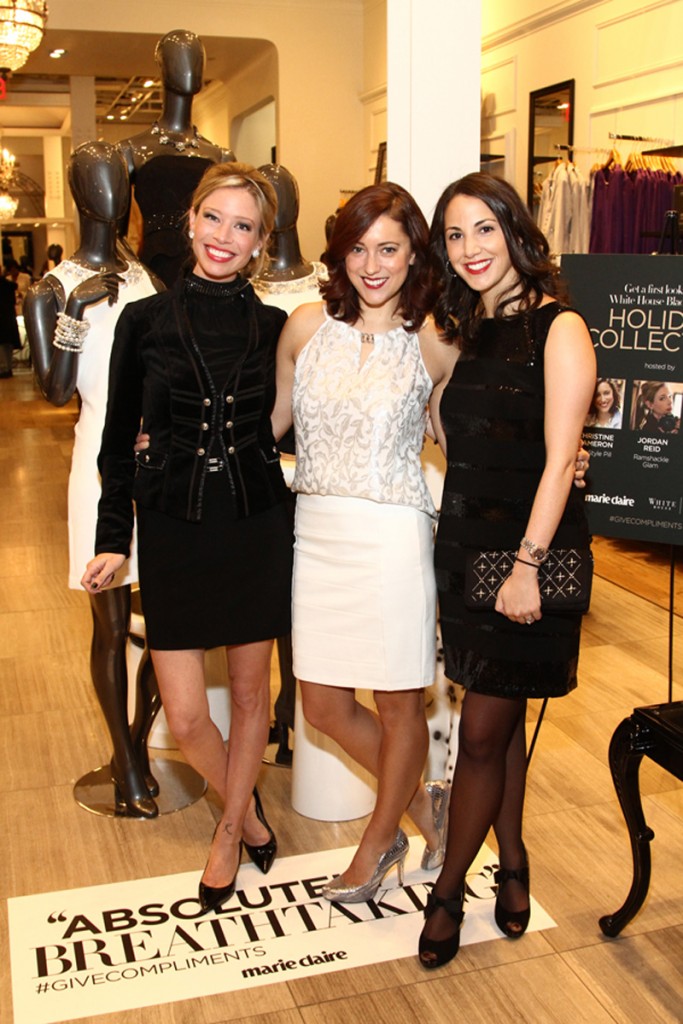
Hosting an event for Marie Claire & WHBM with My Style Pill and Born & Bread
{ NYC | 2014 }
I’ve answered this question in detail elsewhere, of course – the short answer is that my income is extremely diversified, and comes from integrations, affiliate network revenue, traditional advertising revenue, and the offshoot work that has arisen from RG (my books, my shows, and glam | camp). But I’d be remiss if I failed to include in my answer the fact that I have a killer management team.
Way back in 2010 Karen Robinovitz, the president of Digital Brand Architects – the management company that I’m with to this day – found me wandering around out in Izea Land (no shade to Izea; it was a great way for me to begin dipping a toe into site monetization; it just wasn’t exactly the right fit for me) and said I was doing good work, and over the years she and her team helped me build Ramshackle Glam into a real brand with tangible value to advertisers. Having the support of my management is priceless to me, both personally and professionally; they’re the ones who give me the ability to write all day, every day – a lifelong dream that I never even imagined would become a reality – and still keep my family ticking along.
That said: if you’re just getting started and interested in trying to build your site into something that’s financially profitable, management is great, but it’s not the only way to go. There are things you can do to get the ball rolling all on your own.
Like, say, have a really great media kit (a.k.a. a press kit). So let’s talk about that.
* * * How To Use A Media Kit To Present Your Brand (Even If Your Brand Is “Yourself”) In The Best Possible Light * * *
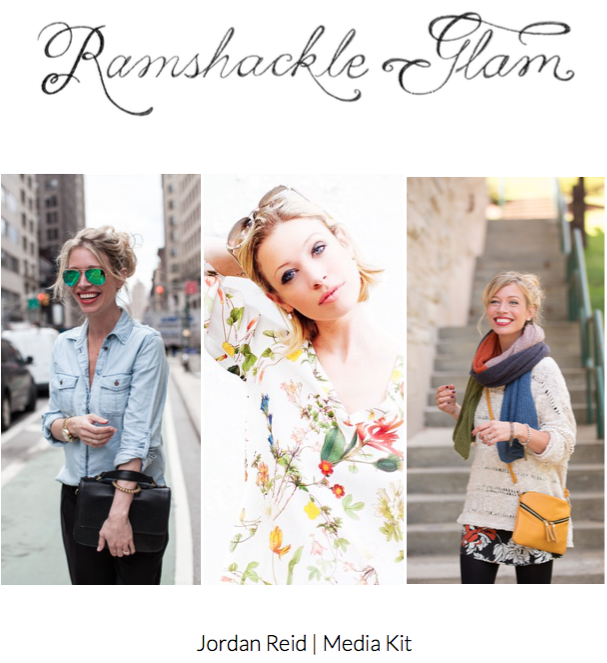
{ A lovely low-res screengrab of the cover page of my media kit }
(Note that while two of the three images here are slightly older (taken pre-massive hair makeover), I chose images in which my hair is pulled up so that they don’t feel dated to anyone who’s already familiar with my site.)
What Is A Media Kit?
A media kit, essentially, is promotional material that you use to convey your brand’s value to potential advertisers, investors, or collaborators. I’ve personally used variations on my baseline media kit to explain the benefits of an integration with RG to companies, to strengthen my book proposals, and to convey the value of incorporation into glam | camp to potential vendors.
In short, a media kit is sort of a mashup between a resume and a portfolio, and allows you to use all the tools at your disposal – photos, press clippings, examples of your work – to build up the strongest possible product. It’s worth putting the time and effort into creating a really great one, because once it’s there it can come in handy in a surprising number of situations.
What Goes Into A Press Kit?
What you’ll need to include in your own press kit varies enormously according to your industry and your goals, and you’ll need to tailor it accordingly to focus on your particular strengths. But based on my own experience, here’s what you need at minimum:
- A cover page that’s simple yet visually striking, and that conveys what you’re selling at a glance. My cover page, for example, includes a bunch of photos of me because my business is so personal that knowing what I look like immediately personalizes the material for the reader and makes the rest of the kit more compelling;
- A “One Sheet”: Essentially a biography with a (concise) explanation of who you are/what your business is selling, plus hard numbers about your brand’s statistics and reach;
- If applicable, a page covering demographics (countries where your products and/or website are most heavily consumed, your largest audience in terms of age and gender, etc);
- A spotlight on the categories where you’re strongest (for me, this is hosting and video experience, but take this opportunity to say Here Is Why I’m Amazing);
- Examples of especially strong work (but only those that are relevant to where you hope the media kit will take you);
- A selection of press mentions, if you have any;
- A contact page with phone numbers and/or e-mail addresses for anyone who wants more information about you or your brand.
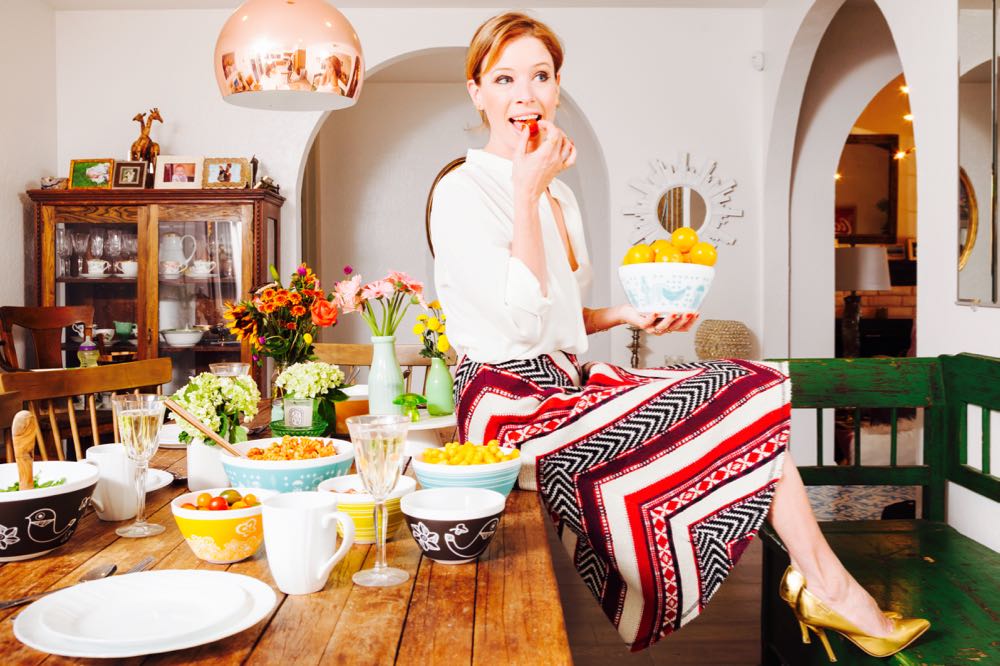
In an old Zara Skirt (similar) for a 2016 Vintage Charm shoot
Key Elements Of A Press Kit:
- Know What You’re Selling. My own media kit starts with images of me taken for branded shoots because the most compelling and concise way to convey what I do in a quick snapshot is to showcase visuals of integrations that I’ve conceptualized and executed. Lead with something that will make the person reading your media kit want to turn the page.
- Streamline. You may be tempted to include every single thing you’ve ever done, ever – but the point of a press kit is to pique interest and open up a conversation, not necessarily to convert all who lay eyes upon the thing into paying customers. Showcase your strongest qualities, make sure the layout is clean-looking and easy to digest, and leave the details to be discussed at a later date.
- Don’t (Necessarily) Include Rates. Some people put a rate sheet right there in their press kit – and that’s not necessarily a bad thing. For retail companies, for example, having wholesale pricing in a press kit simply streamlines the process. This is an individual decision, though – for me personally, I want each collaboration to feel unique and special and exciting, and so to say “Here are your options; here’s what they’ll cost; go ahead and pick one” feels limiting on both ends. But some clients will want you to lay that out for them right off the bat. Your call.
- Go Pro. No spelling errors, no sloppy margins, no low-res images. Your press kit is your chance to showcase the very best of yourself, so when you get an opportunity to send it out, make sure you’re killing it.
So there you have it. Go forth and sell, and make a living doing what ye love.
MORE BLOG ADVICE POSTS, FOR YOUR HANDY REFERENCE:
- Starting Out As A Blogger: What I Wish I’d Known
- Blog Advice I: General Do’s And Don’ts
- Blog Advice II: Rules And Disclosure
- Blog Advice III: Finding The Time
- Blog Advice IV: To Niche Or Not
- Blog Advice V: “Evergreen” Content and Making Money
- Blog Advice VI: Creating Cool Visuals
- Blog Advice VII: Taking Selfies And Getting Over It
- Blog Advice VIII: Five Simple SEO Tips & Tricks
- Behind the (Blogging) Curtain
- Instagram Tips and Tricks
